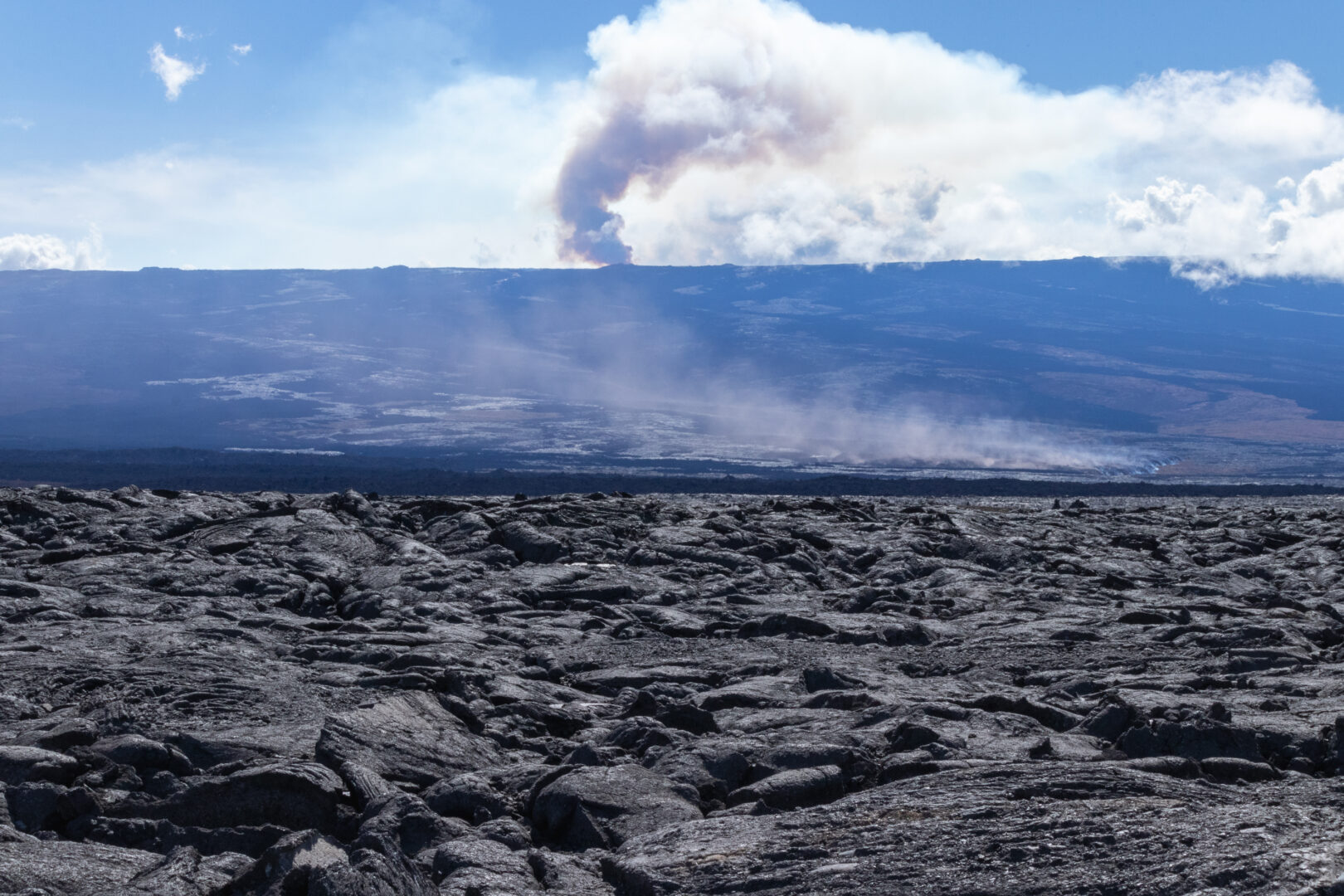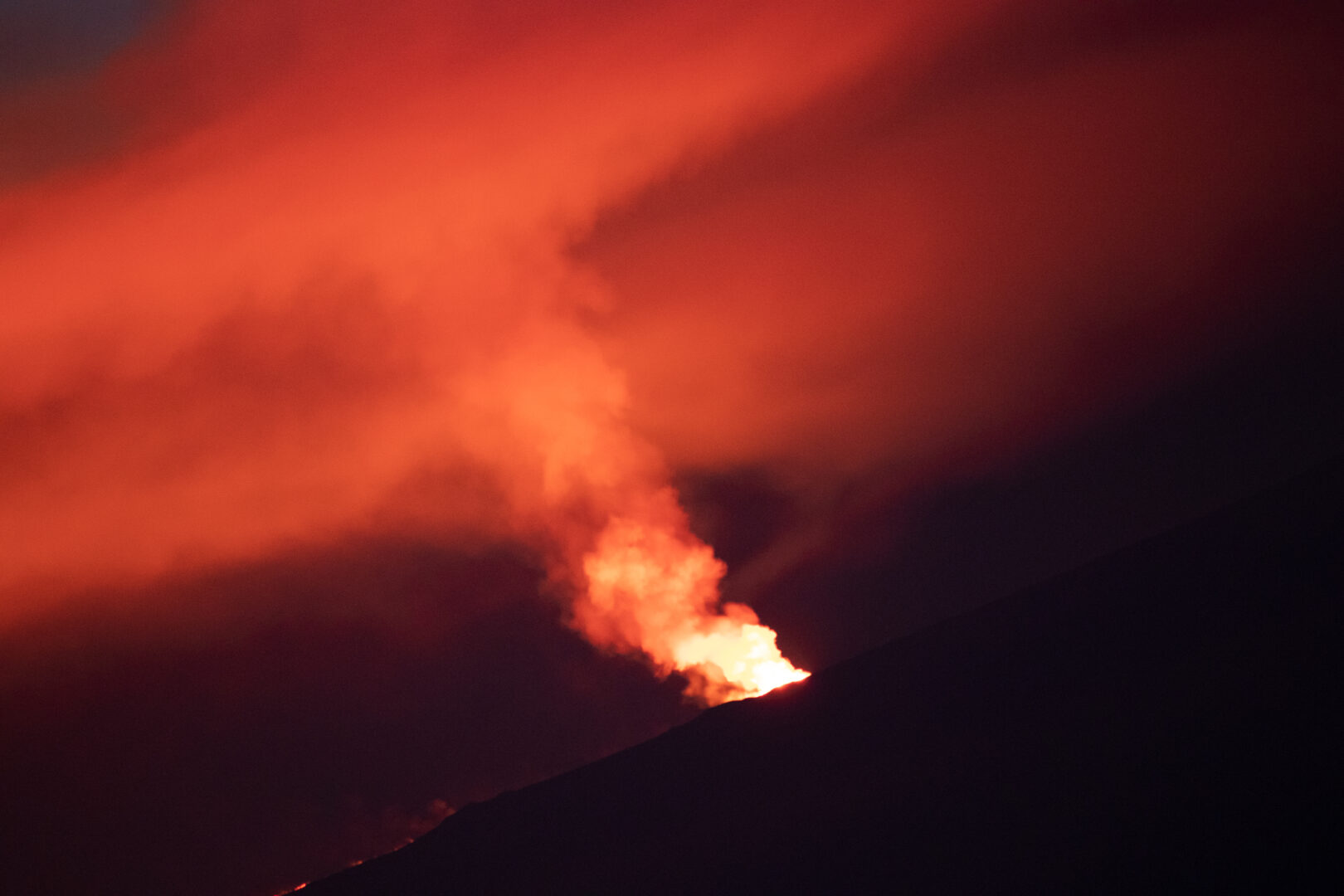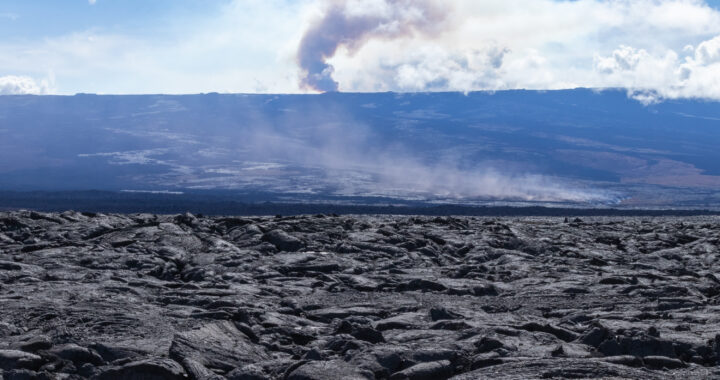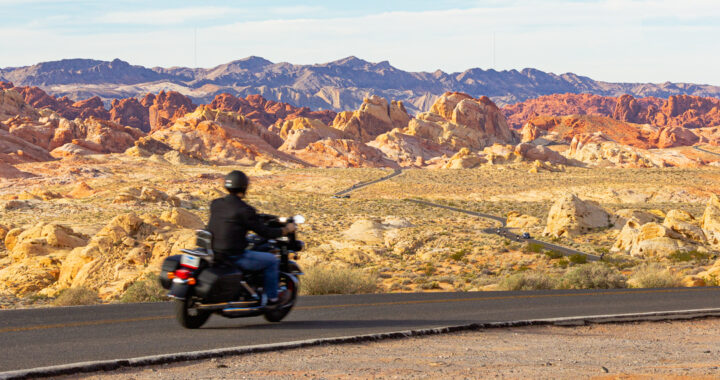How to safely visit Mauna Loa and all of Hawaii’s active volcanos
The Mauna Loa volcano on the Big Island in Hawaii has erupted after being dormant for 40 plus years. We arrived to the island of Hawaii three days after the eruption, while many tourists fled, according to the staff at our hotel. I totally get it. I have been present for another volcano eruption (Mt. Etna) and there’s nothing like Mother Nature reminding you of how insignificant you are! My husband and I planned our trip to Hawaii months in advance so it was just luck that we would be there to witness the eruption. As the valet at our hotel beautifully stated, “to see TuTu Pele (Madame Pele) dance is a privilege.” Indeed. To understand the reverence and respect the Hawaiians have for the goddess of fire is to be grateful to witness this once in a lifetime occurrence. Whether you’re going to Hawaii to see the current eruptions or in the future, here’s how to safely and respectfully visit the volcanos:
Big Island Volcanos by day
You first have to keep up with the local news, the USGS website, and Volcanos National Park to keep up with the latest warnings, risks, and closures. During the day, it’s incredible to witness. You’re not just looking at a regular fire, you’re witnessing a natural occurrence, possibly a disaster if people don’t heed the warnings from scientists and those who study volcanos. In addition to the obvious lava, vog (volcanic fog) is something to factor in, as is the rugged volcanic terrain. The helicopter tours are especially busy when the volcanos are active and something that should be planned well ahead of time no matter when you’re traveling to the Big Island. The volcanos have been especially active the last few years with Kilauea showing off since 1983!

Big Island Hawaii volcanos by night
To many, the best viewing experience is either at night or first thing in the morning before sunrise. We did the pre-dawn drive and followed the advice put out by the state. During the eruption of Mauna Loa, viewing stations were created to allow locals and visitors alike to safely view the site. To see that fiery glow emanating from the darkness is amazing-and humbling. Hawaiians display an open respect to the volcanos and it’s infectious. You can’t help but feel like you’re in the presence of something special when you’re close to something this awesome. Volcanos National Park is open 24 hours and has viewing areas. Be sure to check their website for updates on the volcanos and any closures and safety precautions.

What Not To Do
So now you know what to expect when visiting the volcanos, what shouldn’t you do? Please remember that the Hawaiian islands are…alive. Really alive. What does that mean? When we lived in Hawaii, we quickly learned that the islands are engaged in a delicate dance. The islands are bigger than life. They are in charge and will kick your rear-end if you don’t respect them. Locals and scientists alike will tell you this. That said, the islands also have an extremely fragile ecology. They have suffered from invasive plants, animals, and worst of all, humans. Preservation and conservation for Hawaii means to show stewardship of the land or, malama. This also means showing respect for local beliefs and learning what is considered to be a “no-no.” For these reasons, when visiting the volcanos, please don’t:
- go beyond where the local agencies like the USGS and the National Park Service tell you to go. These scientists and their partners update their sites to keep the public safe.
- throw your trash into the fire. The volcanos are not a burn pit.
- roast marshmallows. Seriously, people are doing this.
- get too close to the lava. Again, guidelines are created to prevent trespassing and to keep the public safe. The state may implement penalties to prevent this.
- throw coins into the lava. Well-meaning people wanting to offer something to Pele should just pay their respects without tangible items.
DO
- be prepared for the cold. It might be balmy when you depart for your excursion but it was around 40°F when we got to the area.
- wear comfortable walking shoes, especially around the rugged, volcanic terrain. No slippahs!
- check the weather and the websites previously mentioned to assure you will have a safe and enjoyable visit to the volcanos.
- be thankful to witness such an amazing and beautiful occurrence. You don’t need the perfect image. Your memories are priceless!
Ready to visit the volcanos on the Big Island of Hawaii? Start planning!

